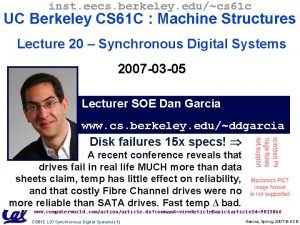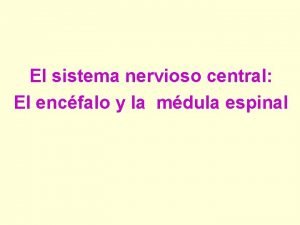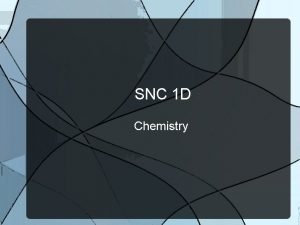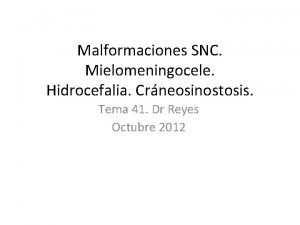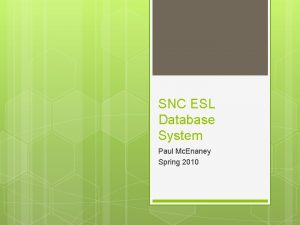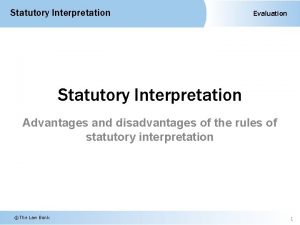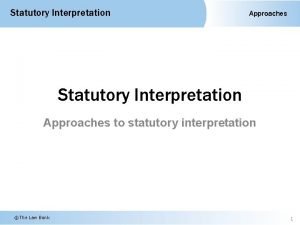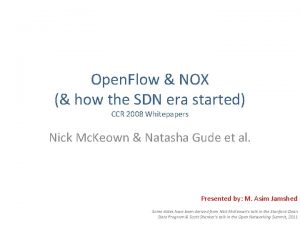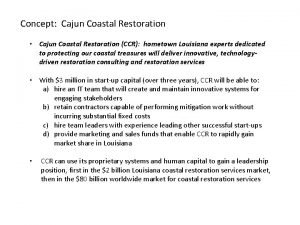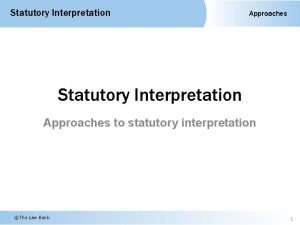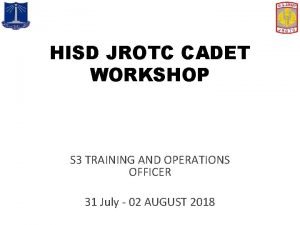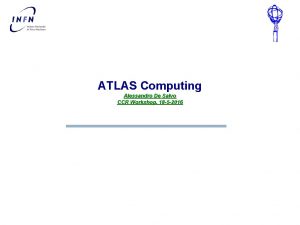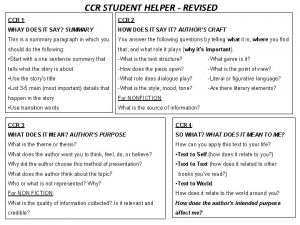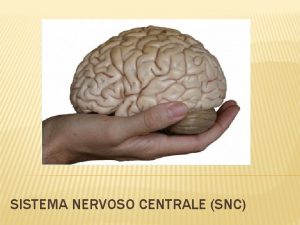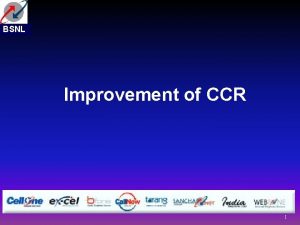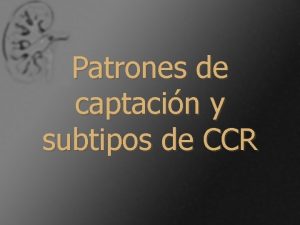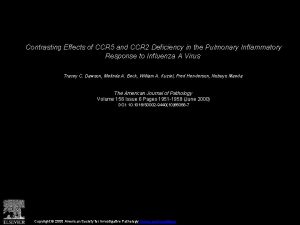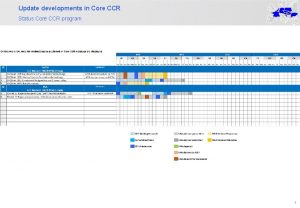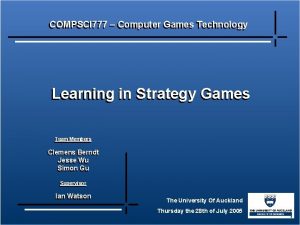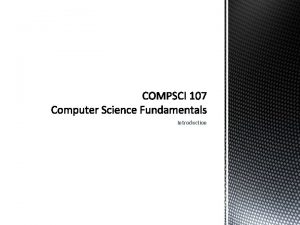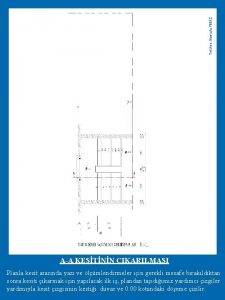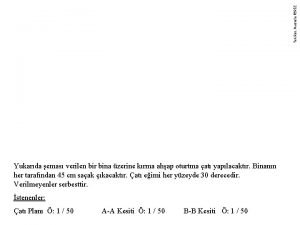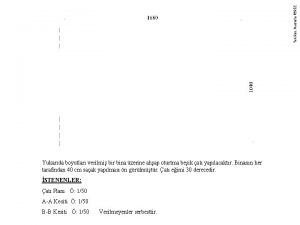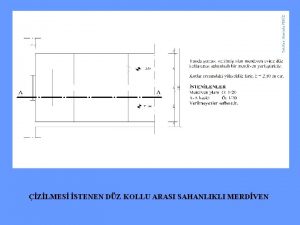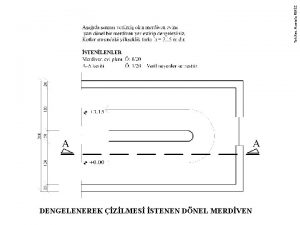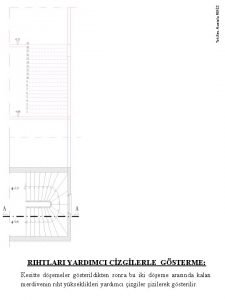CCR Programming Language Nick Perz compsci snc educs






![Machine Language • • Code[program][y] program is the line of code y=0 contains the Machine Language • • Code[program][y] program is the line of code y=0 contains the](https://slidetodoc.com/presentation_image_h/1149f373bf4efc73c9448ed5109da985/image-7.jpg)

![Line 0 ASM Start 16 7 2 -1 1 1 ML Code[0][0] = 0 Line 0 ASM Start 16 7 2 -1 1 1 ML Code[0][0] = 0](https://slidetodoc.com/presentation_image_h/1149f373bf4efc73c9448ed5109da985/image-9.jpg)
![Line 1 ASM Var X 8 ML Code[1][0] = 11 Code[1][1] = 1 Code[1][2] Line 1 ASM Var X 8 ML Code[1][0] = 11 Code[1][1] = 1 Code[1][2]](https://slidetodoc.com/presentation_image_h/1149f373bf4efc73c9448ed5109da985/image-10.jpg)
![Line 2 ASM Speed X ML Code[2][0] = 10 Code[2][1] = 1 Code[2][2] = Line 2 ASM Speed X ML Code[2][0] = 10 Code[2][1] = 1 Code[2][2] =](https://slidetodoc.com/presentation_image_h/1149f373bf4efc73c9448ed5109da985/image-11.jpg)
![Line 4 ASM Add X 4 ML Code[4][0] Code[4][1] = 1 Code[4][2] = 1 Line 4 ASM Add X 4 ML Code[4][0] Code[4][1] = 1 Code[4][2] = 1](https://slidetodoc.com/presentation_image_h/1149f373bf4efc73c9448ed5109da985/image-12.jpg)









![Track Data Structure • Track[pc][6] • Counterclockwise – Track[7][2] = -1 – Track[7][0] = Track Data Structure • Track[pc][6] • Counterclockwise – Track[7][2] = -1 – Track[7][0] =](https://slidetodoc.com/presentation_image_h/1149f373bf4efc73c9448ed5109da985/image-22.jpg)





- Slides: 27

CCR Programming Language Nick Perz compsci. snc. edu/cs 460/perzne April 29, 2003

Project Definition Project Description: Construct a language for the Computer Controlled Railroad (CCR) that can completely control the system. General Requirements: Construct a low level assembly-like language that allows complete control of: a. trains using DCC standards b. turnout switches including feedback c. track detectors 2. Write an interpreter that decodes asm instructions and executes them. 3. The CCR must be able to execute stored asm programs (file) w/o user intervention. 4. Write an API that allows C++ or VB programs to access CCR-asm instructions.

Solution • Created an ASM type language controlling – Train – Photocells – Turnouts • Language includes 25 commands • Addition, Subtraction, Conditionals • Random Number Generator, Delay, Variables • Supports comments

Solution (cont. ) • Train Commands – Speed, Stop, Toggle_Dir • Turnout Commands – Get_To_Dir, Set_To_Dir • Conditionals – If_Less, If_Great, If_Equal, If_Cov, If_Open, If_Str, If_Cur

Solution (cont. ) • Mathematical Commands – Add, Sub, Inc, Dec, Rand • Variable and Label Commands – Var, Label • Miscellaneous Commands – Delay, Waitpc, Jump, Quit, End • Comments supported by the use of opening and closing ‘~’

Methodology • • Compiler – Parses the string, input from a file, and creates machine language , alerts user to any errors within the program – Loads machine language into “memory”, a double scripted array – Machine Language consists of an opcode, mode “bits”, and parameters Main – Function calls which use the global array to retrieve information and execute
![Machine Language Codeprogramy program is the line of code y0 contains the Machine Language • • Code[program][y] program is the line of code y=0 contains the](https://slidetodoc.com/presentation_image_h/1149f373bf4efc73c9448ed5109da985/image-7.jpg)
Machine Language • • Code[program][y] program is the line of code y=0 contains the opcode y=odd number contains the mode “bit” • 1 if variable, 0 if constant • y=even number contains the constant or location of the variable in memory

Sample Program Start 16 7 2 -1 1 1 Var X 8 Speed X End Add X 4 Speed X Waitpc 7 Stop Quit
![Line 0 ASM Start 16 7 2 1 1 1 ML Code00 0 Line 0 ASM Start 16 7 2 -1 1 1 ML Code[0][0] = 0](https://slidetodoc.com/presentation_image_h/1149f373bf4efc73c9448ed5109da985/image-9.jpg)
Line 0 ASM Start 16 7 2 -1 1 1 ML Code[0][0] = 0 train. id = 16 train. lastpc = 7 train. nextpc = 2 train. to = -1 train_dir = 1 train. track_dir = 1
![Line 1 ASM Var X 8 ML Code10 11 Code11 1 Code12 Line 1 ASM Var X 8 ML Code[1][0] = 11 Code[1][1] = 1 Code[1][2]](https://slidetodoc.com/presentation_image_h/1149f373bf4efc73c9448ed5109da985/image-10.jpg)
Line 1 ASM Var X 8 ML Code[1][0] = 11 Code[1][1] = 1 Code[1][2] = 8 symbol_table[0] = “X” symbol_addr[0] = 1
![Line 2 ASM Speed X ML Code20 10 Code21 1 Code22 Line 2 ASM Speed X ML Code[2][0] = 10 Code[2][1] = 1 Code[2][2] =](https://slidetodoc.com/presentation_image_h/1149f373bf4efc73c9448ed5109da985/image-11.jpg)
Line 2 ASM Speed X ML Code[2][0] = 10 Code[2][1] = 1 Code[2][2] = 1
![Line 4 ASM Add X 4 ML Code40 Code41 1 Code42 1 Line 4 ASM Add X 4 ML Code[4][0] Code[4][1] = 1 Code[4][2] = 1](https://slidetodoc.com/presentation_image_h/1149f373bf4efc73c9448ed5109da985/image-12.jpg)
Line 4 ASM Add X 4 ML Code[4][0] Code[4][1] = 1 Code[4][2] = 1 Code[4][3] = 0 Code[4][4] = 4 Code[1][2] = 12

Race Condition • Using If_Cov or If_Open • Sample Code Label a If_Cov 4 b Jump a Label b

Race Condition (cont. ) • Executing If_Cov 4 b • Train has not yet covered Photocell 4, next line is executed

Race Condition (cont. ) • Executing Jump a • As the next line is being executed the train covers Photocell 4

Race Condition (cont. ) • Executing If_Cov 4 a • The train has passed photocell 4, which creates an infinite loop

Race Condition (cont. ) • Really? !? – The Command Would Execute about 50% of the time – Slowing the train increased success – Using one command instead of two increased success considerably

Exceptions • One Train System • Operates in Console Mode • No API for C++ or VB programs to access CCR-asm commands

Demonstration • Program 1 – Train circles the track changing to a random speed between 5 and 15 at every photocell • Program 2 – Train advances to 15, stops, switches turnout, starts again, slows at 11, stops at 14, switches turnout, increases speed until end

Demonstration (cont. ) • Program 3 – Train advances to 0, reverses, stops at 2, toggles direction, toggles turnout, starts, stops at 9, sets turnout, speeds to the finish

Q&A Questions? ?
![Track Data Structure Trackpc6 Counterclockwise Track72 1 Track70 Track Data Structure • Track[pc][6] • Counterclockwise – Track[7][2] = -1 – Track[7][0] =](https://slidetodoc.com/presentation_image_h/1149f373bf4efc73c9448ed5109da985/image-22.jpg)
Track Data Structure • Track[pc][6] • Counterclockwise – Track[7][2] = -1 – Track[7][0] = 2 • Clockwise – Track[7][3] = 2 – Track[7][1] = 15

Strategies • Trial and Error – After getting a few basic commands and running the train, I soon discovered things I needed/wanted to implement • Outside Input – Dr. Pankratz – Classmates – CS 225 Book

Knowledge • Programming Languages – Working with a compiler – Learning how languages work • CS 225 – Looked to ASM to help with my ASM type language • CS 370 – Racing condition problem

Extensions • Two trains • Higher Level Language • Simulator

Advice • Get started early, the more time you spend now, the less you will have to spend later • Meet early and meet often with Dr. Pankratz • Don’t be afraid to change your solution • Make sure you are solving the right problem

Conclusion Thanks for Coming
 Educs
Educs Gloria perz
Gloria perz Household safety symbols
Household safety symbols Rombencefalo
Rombencefalo Water density
Water density Snc lajaa venissieux
Snc lajaa venissieux Snc
Snc Síndrome de kleeblattschädel
Síndrome de kleeblattschädel Snc database
Snc database Ccr&r illinois calculator
Ccr&r illinois calculator Whitely v chappel 1868
Whitely v chappel 1868 Advantages and disadvantages of golden rule
Advantages and disadvantages of golden rule Purposive approach
Purposive approach Nox sdn
Nox sdn Small dynamic business search from the ccr home page
Small dynamic business search from the ccr home page Ccr hometown
Ccr hometown Nagra com
Nagra com R v allen (1872) lr 1 ccr 367
R v allen (1872) lr 1 ccr 367 Ccr 145-8-3
Ccr 145-8-3 Ccr & ccd development
Ccr & ccd development Atlas ccr
Atlas ccr Ccr
Ccr Lungfish ccr
Lungfish ccr Ccr
Ccr Ccr
Ccr Ccr edmonton
Ccr edmonton Saprozoonoses
Saprozoonoses Inherit star spangled eyes meaning
Inherit star spangled eyes meaning
